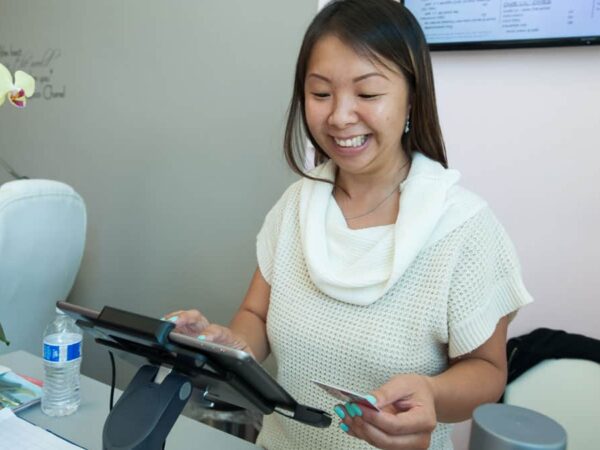Microloans for Women: Why They Matter and How To Apply
Want to learn more about how small business loans for women can help you reach your business goals?Here are some comprehensive statistics on funding for women-owned businesses, plus why microloans are important for women-owned small businesses.

You know you need money to start a business. And access to loans, investor backing, or grants for funding are especially important for women-owned businesses. The sad reality is that women have a harder time securing business loans or investors than their male counterparts. This funding challenge is even more pressing for minority women.
Microlenders offer an affordable way for women-owned businesses to secure competitive rates on loans so they can get up and running. Better yet, microloans are not just a smart option for business funding. Many of these loan programs also provide lendees with mentoring and business resources to help give fledgling businesses what they need to succeed from the outset.
What is a microloan?
Microloans are designed to provide funding to women, low-income, veteran, and minority entrepreneurs and small-business owners who find it difficult to get access to capital through traditional banks. They’re essentially specialized business loans available through nonprofit, community-based organizations. These loans generally have a maximum borrowing cap of $50,000, making them affordable for new businesses.
While loan terms and interest rates can vary significantly between lenders, interest rates usually range between 2.25% and 18% unless the borrower is extremely high-risk. The term length is generally in the three- to six-year range, and the average microloan offered by the U.S. Small Business Administration is about $13,000.
The overarching mission behind microloans is providing qualified small businesses with start-up funding, as well as mentoring, training, and education. It’s not just about getting a business off the ground — it’s about setting it up for success.
How do microloans work?
Microlending works much the same way traditional lending does. With a microloan, you borrow a lump sum of money — typically a lower amount than you would through a bank or traditional lender — and pay back the amount with interest via regular payments.
To take out a microloan, you’ll have to find a microlender. Most of the time, this will be a nonprofit community organization or a similar group. However, the U.S. government also runs microloan programs. One of the biggest microlenders is the U.S. Small Business Administration.
Another option is the USDA microloan program, also referred to as FSA (Farm Service Agency) microloans. These serve the needs of agricultural operators such as young farmers, farmers in the midst of starting new operations, and nontraditional agriculturalists.
What can microloans be used for?
Microloans aren’t exclusively for startups. Entrepreneurs can also use microloan funding to give their businesses a financial boost as they work to expand current operations.
Qualifying entrepreneurs may use microloans for:
- working capital
- business leases
- paying employees
- business office supplies and costs
- insurance
- business licensing fees
- continuing education
- purchasing inventory
Certain microlending programs do have clearly delineated restrictions. It’s important to first speak to your lender and review how you plan to spend the funds to ensure you’re compliant.
The need for small business loans for women
It has been said that startup investors often ask male entrepreneurs how they will promote success and female entrepreneurs how they will avoid failure. Those questions veil some serious internal biases that contribute to the gender gap in funding allocation. According to recent data, only $1 out of every $23 in conventional small business loans goes to women entrepreneurs.
The result of that discrimination is stunted growth for a significant number of promising new businesses — a problem that costs the U.S. nearly $800 billion each year. Perhaps the 2019 State of Women-Owned Businesses Report (commissioned by American Express) puts it best: “The potential of women entrepreneurs for spurring economic growth has not been fully realized.” Microlending is considered one way to bridge the funding gap and give women the capital they need to succeed.
Key findings for women-owned small businesses
Among other key findings, the American Express report demonstrates that women, particularly women of color, are launching new businesses faster than any other demographic. Over the past five years, the growth rate of women-owned businesses clocked in at 21%, in contrast to a 9% growth rate for businesses overall.
However, the report also shows that women’s share of funding still lags far behind that of male entrepreneurs. Not only that, but this revenue gap has actually increased in recent years. In 2019, women-owned businesses generated just 30 cents for every dollar generated by a privately owned company. (In 1997, that ratio was 37 cents to the dollar.) Furthermore, the report states that women-owned businesses in 2019 “averaged earnings of $142,900 compared to $474,900 for all privately held businesses and $1.4 million for all firms.” That’s a significant difference.
THE GENDER GAP IN SMALL BUSINESS LOANS FOR WOMEN: BY THE NUMBERS
Though these trends reflect a complex set of financial and societal patterns, access to and utilization of funding opportunities likely play a key role in perpetuating the existing disparities. SCORE’s Megaphone of Main Street: Women’s Entrepreneurship Report reveals several notable statistics related to funding of women-owned businesses:
- Men are more likely to seek out financing for their businesses (in 2018, 34% of men sought financing for their businesses compared to 25% of women).
- Men were also more likely to succeed in obtaining funding, including loans and equity funding (38%, compared to 30% of women).
- Women relied more heavily on credit cards (46% of women compared to 39% of men) to fund their business ventures.
Securing microloans for women
Encouragingly, there is some preliminary evidence to suggest that women are receiving their fair share of microloans, with 57.4% of the SBA Microloan program’s loans going to women-owned businesses.
A new report from the Female Founders Forum — a partnership between The Entrepreneurs Network think tank and the Barclays bank in the UK — also provides some hope. The report shows that female-founded, equity-backed businesses have now closed the gender funding gap in GreenTech. Female representation within GreenTech businesses is also now higher on average than in other sectors.
However, many industries still have a long way to go, and microloans could help them get there. That’s because many women-led businesses are small, and traditional lenders are less willing to take a chance on very small operations. Microlending, however, helps provide loans in small, manageable chunks that help new business owners develop the confidence and credit they might need to get the ball rolling. Today, women make up more than 70% of microfinance clients worldwide.
Am I eligible for a microloan?
Every microlender has its own criteria and requirements for loan eligibility. However, most are designed to make it easier for startups and early-stage businesses to qualify. While some microlenders require a minimum credit score and a detailed business plan, others ask for nothing more than the last three years of accounts and proof of cash flow.
Some microloans are only available for certain markets, industries, or geographical areas. Others are designed to provide business financing specifically for women, entrepreneurs of color, or immigrants.
If you meet a microloan’s specific criteria, there are typically only two things your lender wants to know:
- Can you repay the loan?
- Does your business have the potential to grow?
Your loan application will, therefore, be judged on the following:
- Your credit score
- Available collateral
- Proof of revenue and/or steady cash flow
- Background check
- Your comprehensive business plan
- How you plan to use the money
How do I apply for a microloan?
You can find microloans from a range of community development and nonprofit organizations, including Accion Opportunity Fund, LendingClub, Upstart, Kiva, and Funding Circle. The U.S. Small Business Administration (SBA) and the U.S. Department of Agriculture (USDA) also offer microloans.
Each institution has its own application process. In the case of an SBA loan, for example, a small business must meet with an intermediary lender to apply for a microloan. Many institutions will allow for the applications to be made online.
To apply for a microloan, you’ll need to follow these steps:
-
- Find a lender and read the requirements
Research lenders, specifically in your geographical region, and look through their eligibility criteria to see which ones you can apply for. Make sure you understand the type of loan offered and the repayment terms.
-
- Complete your paperwork
To streamline the process, first gather all the documents you need. These include LLC documentation, your IRS Employer Identification Number (EIN), business licenses, bank statements, details of employees, annual revenue, and your credit report.
-
- Draw up a comprehensive business plan
Lenders want to know how your business will make money. Make sure you have a detailed business plan that lays out the type of business you run and how you plan to grow it.
-
- Calculate the loan amount
How much money will you borrow to meet your business needs? How do you intend to use it? Put together a general plan for spending.
-
- Identify collateral, if any
If you’re going to be offering business or personal collateral — or having someone provide a personal guarantee — get those details finalized so you can present your plan to your lender.
-
- Apply
You’ll need to fill out a separate application for each institution and microloan. Some providers will ask you to come talk in person, which gives you an additional opportunity to share your strengths and talk about your business potential.
Tips on getting approved for a microloan
Getting approved for a microloan is all about making sure your application simplifies the lender’s credit decisions. Here are some things to keep in mind.
Submit a complete application
To speed up the process, be sure to provide all the necessary documentation on your first go. Remember that your goal is to prove that you have a business that’s growing and will be able to repay the loan. Proving that you’re organized and on top of things can go a long way toward securing your lender’s confidence.
Submit a business plan
Even if your lender hasn’t specifically asked for a business plan, it can be helpful to submit one. Lay out how you plan to take your newly formed startup to a fully operational company, both in the short term and over the long haul. This gives prospective lenders the confidence to back your business.
Get your financial documents in order
When you apply for a loan, lenders will want to know your current financial situation, your creditworthiness, and your business’s profitability. While a good business credit score is helpful, it’s not always necessary. If you have no credit history, financial institutions can often look at your personal credit history and savings accounts instead.
Guarantee the loan
Many — though not all microlenders — ask borrowers for some form of collateral to secure the loan. This is especially true if you don’t have much credit history. Both business or personal assets, such as real estate holdings, can serve as collateral.
Find out if a microloan is right for you
While financial equality has come a long way in recent history, the playing field is still far from level. The good news is that even if traditional lenders aren’t willing to back your business, you still have options. Microloans can help traditionally disadvantaged business owners, such as women, veterans, or minorities, secure the funding they need to help their businesses thrive.
To find out if applying for a microloan is the right choice for your small business, visit Accion Opportunity Fund’s interactive webpage. For comprehensive information on government grants, educational programs, and networking opportunities available to women entrepreneurs, visit Resources for Women-Owned Businesses.
Thank you to the Coca-Cola Foundation for supporting Accion Opportunity Fund in expanding economic opportunity for women business owners.









